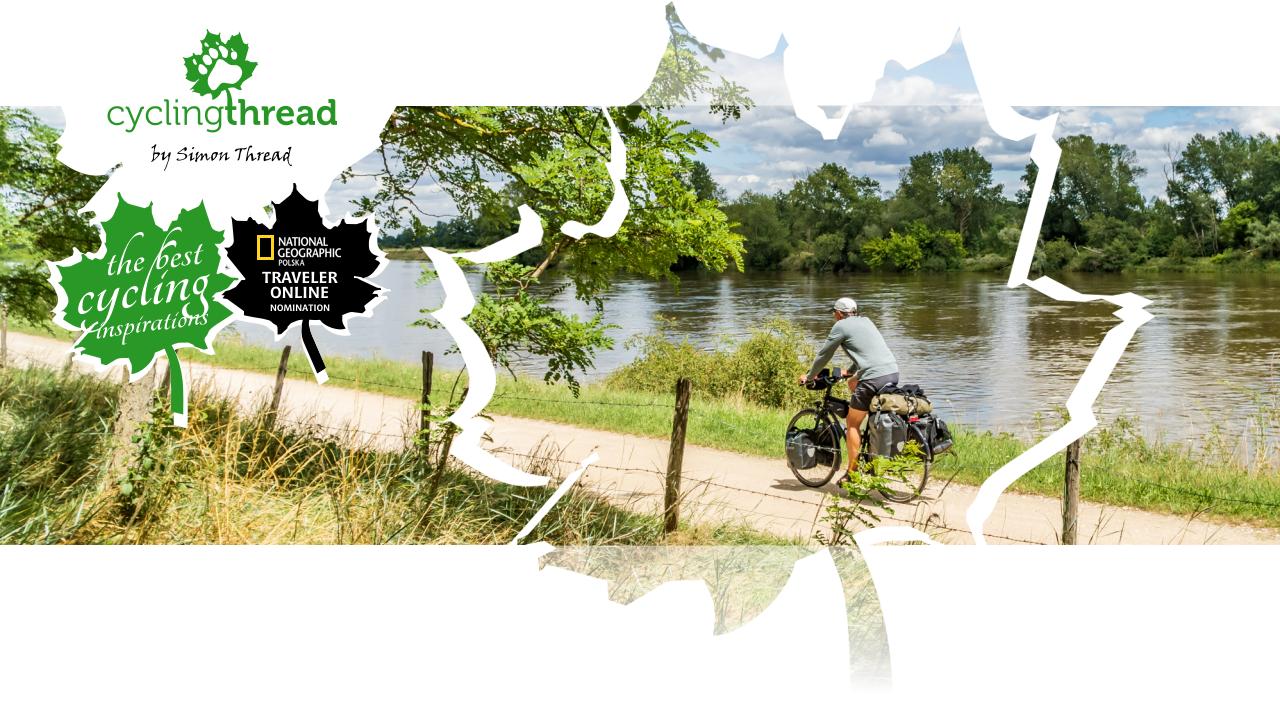
Castles and palaces along the Loire. France by bike
Our experience of cycling the Loire à vélo - the famed bike route in the Loire Valley in France - was quite different from what we had imagined. We were expecting miles of smooth, asphalt bike paths, but instead, we found ourselves on gravel tracks along the Loire. We anticipated enchanting landscapes, but what we encountered were more traditional riverside sceneries, which, this time to our expectations, were adorned with magnificent castles and palaces. And it was their number, beauty and diversity that made our initial impressions of the region fade into the background. Because the Loire Valley is, above all, about the history of France, its extraordinary culture, art and architecture, bestowing upon the region a touristic splendor that ranks the Loire among the most attractive rivers to explore in Europe.
Route on the map
GPX file (GPS track): cyclingthread.com-loire-valley-2022.gpx
Loire by Bike - table of contents
- The Loire on UNESCO's World Heritage List
- Châteaux along the Loire: castles, palaces, manors
- The Loire cycle route among the best in Europe
- Quaint Sully-sur-Loire as a starting point
- Accueil Vélo - cyclist-friendly places
- Old railway bridge for cyclists
- Pleasant gravel roads instead of asphalt
- Clear detour as good practice in tourism
- Orleans: Joan of Arc and Ukraine
- Fascinating interiors of the Meung-sur-Loire castle
- Beaugency: lunch and a digital art center
- Atomic views on the Loire Route
- The most famous castle in the Loire Valley
- No need to know French to enjoy France
- Blois - our favorite castle in the Loire Valley
- Blois - not just a castle
- Excellent organization of cycle tourism in France
- Garden festival more attractive than the castle
- How to prepare a room for bicycles?
- Foie gras - unethical but delicious
- Two beautiful châteaux and Leonardo da Vinci
- One of France's most important wine regions
- Tours - another highlight of our cycling trip
- Four garden sectors at Villandry castle
- Cycle path on the crown of the flood embankment
- The Duchy of Brittany becomes part of the Kingdom of France
- Good website for the Loire Route
- Joan of Arc arrives at the Chinon fortress
- Fouée, foie gras, tarte tatin and rillettes
- Troglodytes, the cave dwellers of the Loire Valley
- Broad panorama from the Saumur castle
- Cycling tour operators in the Loire
- Seventeen towers of the Angers fortress as a grand finale
- Cycling information point in Angers
- Special train for cyclists in the Loire
- To the Loire on a well-organized route

The Loire on UNESCO's World Heritage List
During our stay in France, we cycled through a segment of the central course of the Loire, which was inscribed on the UNESCO World Heritage List in 2000. This most precious and distinguished section of the Loire Valley begins in Sully-sur-Loire near Orleans and ends in Chalonnes-sur-Loire near Angers. To travel along this approximately 280-kilometer stretch of the river, we covered around 380 kilometers of the Loire à vélo bike route, literally translating to "Loire by bike". We embarked from the aforementioned Sully-sur-Loire and then through Orleans, Chambord, Blois, Amboise, Tours, Chinon, Saumur, we reached Angers. On our return, a very special train for cyclists, which I elaborate on towards the end of the article, assisted us.

The reasons for the Loire Valley being listed by UNESCO are not only its extraordinary architecture but also the preserved cultural landscape, a result of centuries of integration and interaction between the river's natural environment and human activity. The Loire Valley has been and remains a vital axis for communication and trade in France, playing a significant role in the development of French history, culture and science. Here, kings, artists, philosophers and scientists created and developed their ideas. The works and concepts from the Loire influenced literature, painting, architecture and many other forms of art and science. The landscape reveals many still-functioning forms of interaction between it and the people and environment they live in. Among these are agricultural, viticultural, gardening and various artisanal activities.

Châteaux along the Loire: castles, palaces, manors
By the way, we often faced a linguistic dilemma on how to refer to the "structures" along the Loire. Contrary to popular belief, which describes the Loire Valley as a "land of castles on the Loire" or "Loire castle route", many of these places should be called palaces due to their lack of defensive functions, which should distinguish a palace from a castle. The French handle these nuances better than us - they simply call all palaces, castles, manors, residences and estates "château" (plural "châteaux"). Additionally, aside from castles and palaces, one can also admire splendid medieval churches in the Loire Valley, like the cathedrals in Orleans, Tours and Angers.

The Loire cycle route among the best in Europe
I don't want the introduction to my article to imply that we were disappointed with our stay in the Loire Valley. Far from it. The rather ordinary landscapes of the Loire were overshadowed by the palatial and castle interiors we visited and also by the exquisite dishes presented to us by the restaurateurs of the Loire. Instead of the quality of the cycling tracks, I often found myself more impressed with the amenities of the Loire à vélo cycle route, including facilities from the French network of cyclist-friendly places, clear route markings and the aforementioned train servicing the cycle route. Our week-long journey through the Loire Valley was a series of many intriguing, enjoyable travel and cycle-touring surprises, which in our eyes added even more appeal to it, ranking it high on our list of the best cycling routes in Europe.
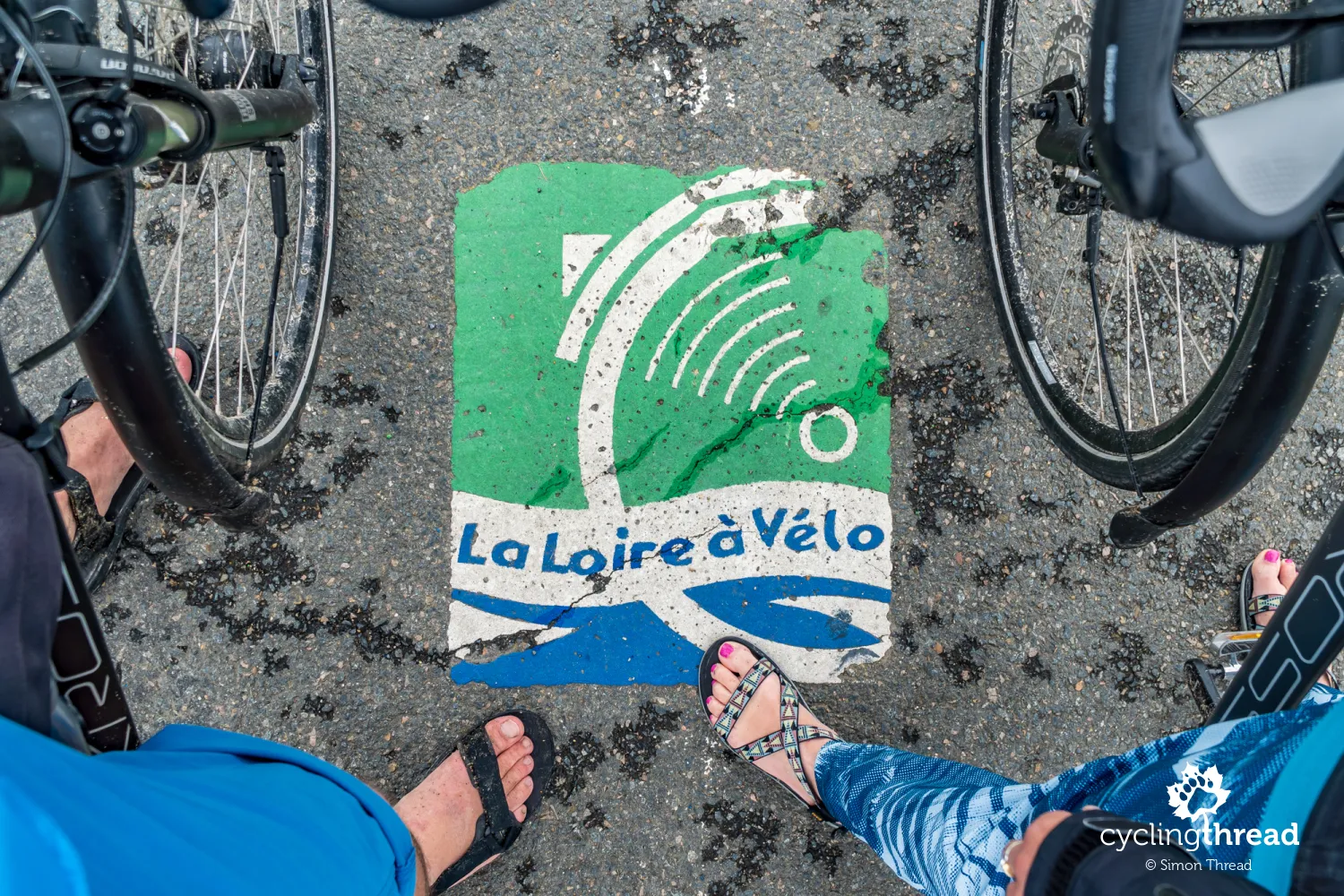
Quaint Sully-sur-Loire as a starting point
For the best starting point of a cycling expedition in the Loire Valley, we chose the quaint town of Sully-sur-Loire. Its main attraction is the small Château de Sully, a beautiful example of military-residential architecture. The 13th-century moated structure fascinates with its historical richness and beauty. In the town center, there's also a historic bridge over the Loire, connecting two parts of the town, adding charm to the picturesque surroundings. It's also worth exploring the cozy streets with stone houses and narrow passageways surrounding the castle - our evening stroll through the historic part of Sully-sur-Loire was a pleasant, symbolic first step on our several-day journey back in time to the old Loire Valley.

At the Château de Sully, we were guided by a young guide, for whom we were the first to be told about the castle in English. From the approximately hour-long tour, we remember, among other things, the story explaining the shape of some of the towers - they were "cut" and deprived of their pointed roofs by the 9th Duke of Sully, Maximilien Gabriel, who in this way, mimicking the execution of Louis XVI, expressed his support for the slogans of the French Revolution. And taking advantage of our blogger-journalist privileges, we could also see (and smell - ah!) the original, preserved wooden structure of the main castle building's vault, underscoring the authentic, historical character of this place.

Accueil Vélo - cyclist-friendly places
In Sully-sur-Loire, we first encountered the network of cyclist-friendly places in France named Accueil Vélo. It can include accommodation facilities, restaurants, bike rentals, bike services, offices organizing cycling holidays and tourist attractions - of course, after meeting certain conditions. For hotels and guesthouses, it's essential to have a secure place for bikes, restaurants commit to offering free drinking water to cyclists and bike services - quick repairs. On the Accueil Vélo website, facilities can be browsed by category or chosen cycle route, like the Loire route. I looked at the system's statistics - Accueil Vélo includes over 7,000 facilities across France and among them were almost all the guesthouses and hotels where we slept. So we had this important comfort that asking about a place for the bike didn't end with surprised looks but pointing out a place where we could safely park our bikes.

Old railway bridge for cyclists
Just a few hundred meters from the town center, we come across a beautiful example of good practices in cycling tourism, which I talk about during my cycling lectures. It's a railway bridge from 1880, which after the closure of the railway line in 2011, was renovated and made available to cyclists on the Loire cycle route in 2020. It's over 400 meters long and on the wide pillars, there's space for a second parallel structure that was never built. Today, it's not just a crossing over the river, but also an excellent viewpoint allowing one to look at the Loire and Sully-sur-Loire from an original, riverside perspective.
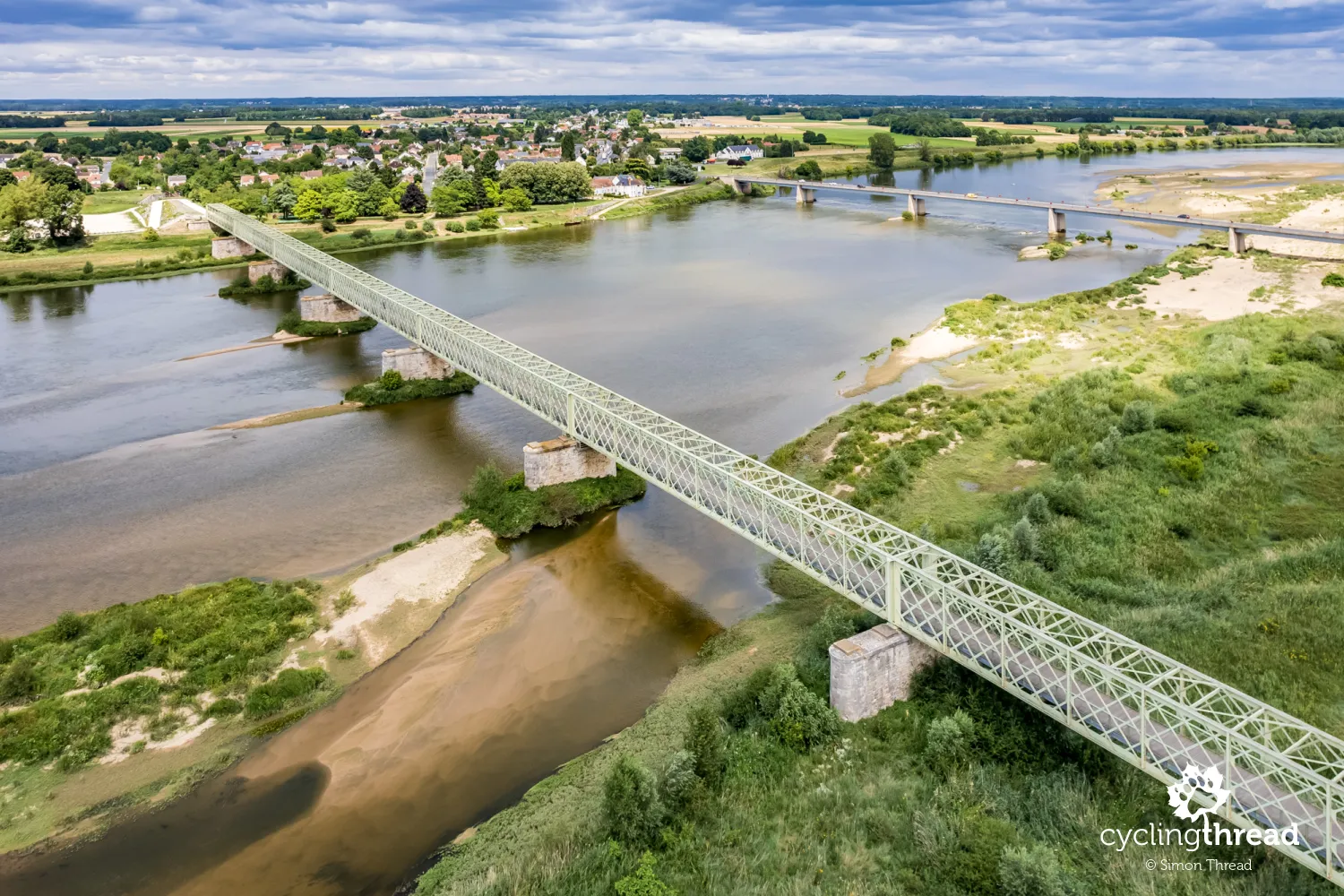
Pleasant gravel roads instead of asphalt
The first kilometers we rode brought us one of those surprises I mentioned in the introduction. It turned out that the Loire à vélo route would not be a consistent, asphalt path, but rather many sections would be on natural or similar surfaces. Fortunately, as we later discovered, these non-asphalt parts of the route were always on even, smooth surfaces, usually gravel, which did not detract from the pleasure of riding and sometimes even added to its charm. When we rode on gravel roads along the river, access was limited to bicycles and pedestrians, ensuring a peaceful journey and protecting the friendly surface from damage by cars.
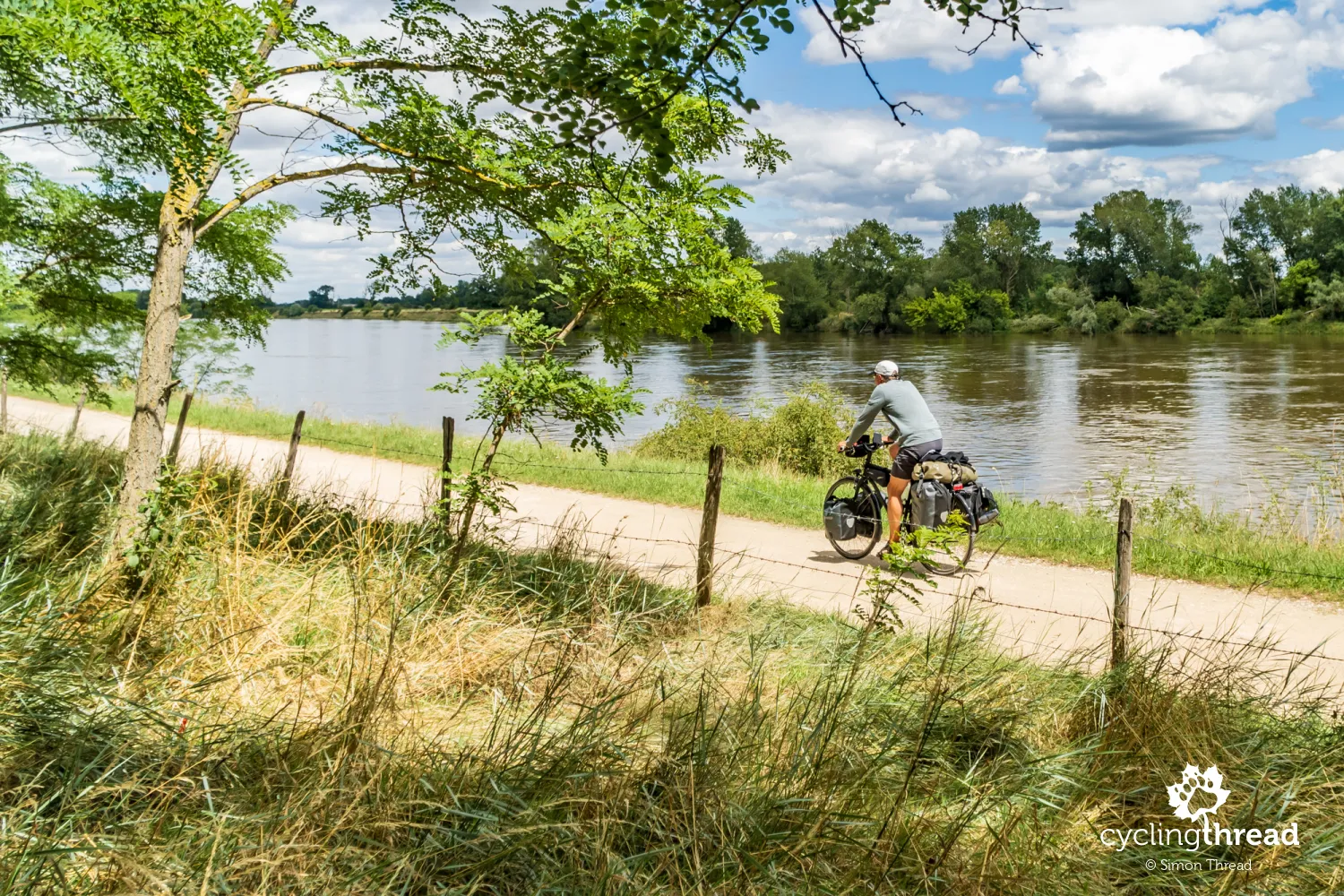
Clear detour as good practice in tourism
A few kilometers before Orleans, during the first, very rainy day on the route, we encountered another pro-cycling solution: information about short detours on the cycle route due to ongoing road works. The French show how, with very little cost - just a laminated sign - to indicate the temporary detour and minimize cycling inconveniences. Really, it doesn't take much to show cyclists that they are expected and welcome.
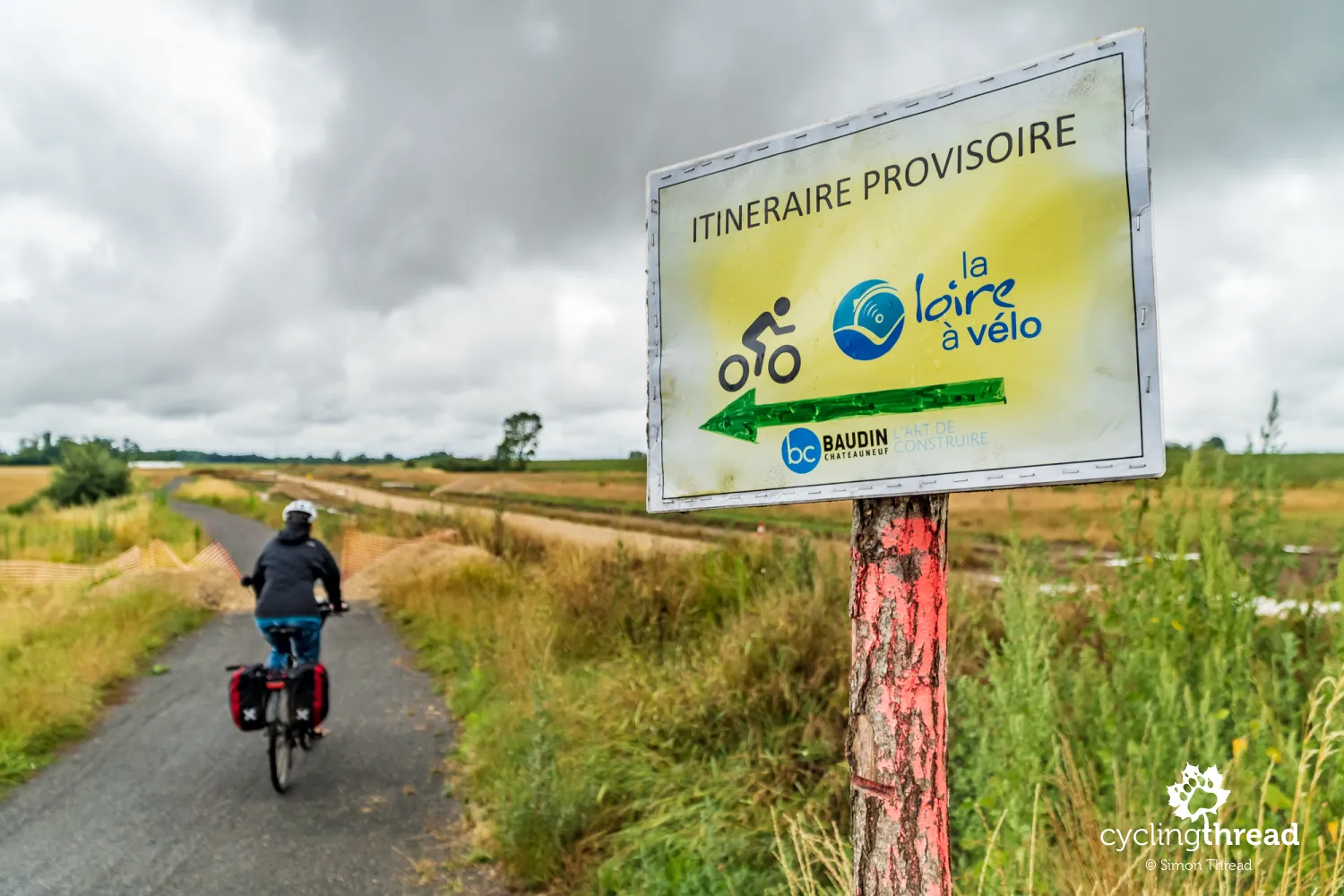
Orleans: Joan of Arc and Ukraine
In the center of Orleans, we were greeted by huge, yellow-blue Ukrainian flags fluttering on Joan of Arc Avenue. Here I took one of my favorite photos from the trip, as right after the rain, the sun's rays illuminated the majestic Sainte-Croix Cathedral of Orleans, closing off the city's most famous street to the east. The cathedral's towers are 88 meters high, making it one of the five largest in France. The cathedral is associated with the legend of a triumphant holy mass in 1429 attended by Joan of Arc after repelling the English from Orleans, but the fact that the current cathedral's construction started in 1601 suggests that the well-known legend actually pertains to the previous Romanesque church built in the same place. The present Sainte-Croix Cathedral was only opened in 1829 - exactly 400 years after the Siege of Orleans. An interesting fact is that since the end of World War II, neither of the two towers of the cathedral has been renovated, which is why they remain inaccessible to visitors.

The name Joan of Arc came up many times during our trip in the Loire Valley. All because of the 15th century when France was fighting the Hundred Years' War with England and it was the teenage Joan of Arc who contributed to its victory. France was then ruled by Isabella of Bavaria, the wife of King Charles VI, who, suffering from schizophrenia, was incapable of independently governing the country. When Isabella of Bavaria - before the death of Charles VI - handed over the rights to the French crown to the English King Henry V, France was in turmoil. To restore French rule, it was first necessary to defeat the English and then crown the legitimate successor of Charles VI, his son - Charles VII.

Historical records say that it was then that the twelve-year-old Joan of Arc experienced a divine revelation, which later played such an extraordinary role in French history. Two years later - at the fortress of Chinon, which we visited later - she met the future King Charles VII and convinced him that he should support her efforts to take command of the defense of Orleans, besieged by English troops. She succeeded - in white armor and on a white horse, she reached Orleans and her strategy to defend the city worked, saving it. Under Joan of Arc's leadership, the French went on the counterattack and achieved a series of victories. Captured by the English after one of the battles, two years after the Siege of Orleans, she was judged by them and burned at the stake. However, she only became a symbol of the fight for French independence in the early 19th century, after the French Revolution and the Napoleonic wars.

Orleans is one of those places where it's worth planning a longer stay, even if it means ending the ride midday, just to observe many cycling solutions that were introduced during and after the pandemic to support the development of cycling in French cities. Orleans also has many places to continue the adventure with French cuisine. We had the pleasure of dining in a small, almost home-like bistro, At Dionysus. The host, whom we initially thought was Greek, first appeared as a waiter, patiently helping us overcome the French language barrier and then disappeared into the kitchen, transforming into the main culinary commander.

Fascinating interiors of the Meung-sur-Loire castle
Just 20 kilometers from Orleans is the town of Meung-sur-Loire, home to a castle whose origins date back to the 12th century. Thanks to several renovations, the Meung-sur-Loire Castle now exemplifies a blend of various architectural styles, from Gothic to Renaissance, earning it the nickname “the castle with two faces” due to its two distinct facades. Touring the castle is an engaging experience, combining the exploration of interestingly arranged halls with a visit to the old castle kitchen and dungeons, which once served as a prison, holding, among others, the poet François Villon. Once the residence of the bishops of Orleans, the castle is now a lively piece of history, run by private owners and frequently visited by school trips. Special events, such as historical reenactments and knightly displays, bring the past of the ancient Loire Valley to life.

Beaugency: lunch and a digital art center
In the next town, Beaugency, after passing the area of the former river port on the Loire, marked by a replica of an ancient boat on the shore and then passing by the beautiful Pont de Beaugency bridge, we again noticed an Accueil Vélo sign - this time on the door of a small bistro. It was time for a meal, so we stopped for a quick break and soon plates with cold appetizers were set before us. Nearby stands the “chateau” in Beaugency - a medieval castle housing a well-known modern art museum in France - a center of digital art, organizing historical shows using modern multimedia techniques.

Atomic views on the Loire Route
A large part of the stretch between Meung-sur-Loire and Saint-Dyé-sur-Loire consists of gravel sections along the river and flood embankments, sometimes coming close to the water's surface. At one point, past Beaugency, on the left bank of the river, the tall cooling towers of the Saint-Laurent-des-Eaux nuclear power plant become visible. However, what is still exotic for us, is quite normal for the French - France has 56 nuclear reactors, although at the end of 2022, only half of them were operational. An interesting fact is that during the construction of the Saint-Laurent-des-Eaux plant, the height of the cooling towers was reduced from the planned 160 meters to just 120 meters, as there were fears that they would... spoil the panorama of the Loire Valley seen from the viewing terraces of the nearby Chambord Castle. Today, the plant has two active reactors, providing about 2% of the country's total electricity production.

The most famous castle in the Loire Valley
That day, we ended our cycling distance earlier, left our panniers at a guesthouse in Saint-Dyé-sur-Loire and rode “lightly” to the Château de Chambord - one of the most famous castles (or perhaps palaces) in the Loire Valley. A several-kilometer branch of the cycle route leads to it, much of which passes through pleasant forest and then park paths. Unfortunately, during our visit, the palace was undergoing extensive renovation and the impressive towers of the Chambord Palace were tightly covered with scaffolding. I wonder if Sting, who had performed there two days earlier, was also disappointed?

The Château de Chambord is the largest of the palace-castle complexes in the Loire Valley and one of the most distinctive of its kind in the world. The Renaissance interiors are so vast and numerous that even the large numbers of tourists seen everywhere around the palace are barely noticeable. The scale of Chambord's construction is evidenced by often-published figures - the main facade is 128 meters long, topped by 6 towers, with interiors comprising 440 rooms, 84 staircases, 365 fireplaces and 800 sculpted capitals. The museum in Chambord is one of several in the Loire Valley that can be visited with the help of a specially prepared tablet, describing the viewed items and rooms - a very practical gadget and also available in our language. We will encounter it again in Blois and Amboise.

No need to know French to enjoy France
Indeed, should the lack of French language skills be a barrier to traveling to France? Absolutely not. It's commonly said that the French are in love with their language and reluctant to use other languages, but in practice, the tourism industry employs staff who can communicate in English with guests. And a random, casual encounter or request to a French person who really doesn't know English can be managed... through gestures, almost always to the benefit of a cheerful atmosphere. Exploring French museums is made easier with excellent histopads, which allowed us to tour several castles in our language, including Amboise and Chambord.

We return to Saint-Dyé-sur-Loire for dinner and overnight stay, a picturesque village nestled in the heart of the Loire Valley. For centuries, it was an important timber shipping port, commemorated by an exhibition in the Maison de la Loire museum. The town is full of charming, narrow streets and historic houses. Among them, we find two neighboring dining establishments - Bistrot Velo, easily recognizable by the old bike part of the terrace decor and the restaurant Chez Walter. This family business is known for serving traditional, homemade French cuisine. Here, in a hospitable atmosphere and over a menu full of local specialties, we end our next cycling day and then land in a cozy attic room in a small family-run guesthouse. From the window, we watch the sun set over the Loire.

Blois - our favorite castle in the Loire Valley
The next day starts with a 15-kilometer sprint to make it to a pre-arranged tour of the Blois Castle. This day will later be remembered as probably the most interesting, partly thanks to the extraordinary Blois Castle, one of the most important historical sites in the Loire Valley in France, vividly and humorously described to us by our guide. This impressive building consists of three wings, each built in different styles by rulers who each wanted to leave an architectural mark on the history of France. Inside the castle, remnants of the 13th-century structure, on which later expansions were based, are still visible. If I had to choose a favorite among the palaces and castles of the Loire Valley, it would definitely be Blois Castle.

Visiting Blois Castle is a content-rich journey through centuries of French history. Each successive hall and chamber brings a new portion of history, biographies and fantastic visual and aesthetic experiences. The castle brims with refined, historical beauty and it's moments like these that make me occasionally regret the very active form of travel that is cycle tourism. In Blois, I could spend an entire day off from traveling and savor the beautiful place, instead of treating it as just another stop on a daily, several dozen kilometer distance - consider this when planning your trip!

I'm not even sure what to write about and in what order. About the distinctive sculptures on the main facade of the castle, the beautiful spiral staircase that inspired similar ones we saw the previous day in Chambord, or the beautiful Estates-General Hall - the oldest ceremonial hall in France? Or perhaps mention the lapidary with preserved original pinnacles, sculptures, gargoyles and other magnificent details? Or the beautiful fireplaces, or the symbols hidden in paintings, sculptures and tapestries, like the porcupine from the coat of arms of Louis XII, the salamander from Francis I's coat of arms and the ermine of Claude of France? And what about the extraordinary views, not only of the Loire Valley, but even of rows of preserved gargoyles protruding from the castle facades?

Blois - not just a castle
However, Blois is not just about its castle. The Denis Papin stairs, named after the inventor who contributed to the development of the steam engine, are impressive. Each year, they change their appearance - painted differently, they evoke different associations and lend an unusual charm to the street we ride into the city from the Loire cycle route. It's impossible not to visit two beautiful temples in Blois - the first is Saint Louis Cathedral and the second, located below the castle, is Saint Nicholas Church, one of the most outstanding examples of French Gothic, clearly visible from the castle terraces and surrounded by narrow streets of the artists' district. Riding up the castle hill or preparing to leave it, you'll likely also notice the six-headed dragon peeking out every 30 minutes from the windows of the House of Magic, standing exactly opposite the castle courtyard.

Excellent organization of cycle tourism in France
It's around here that we first encountered a wonderful French cycling family, consisting of eight children and three adult caretakers, including only one adult male. They have been traveling this way for several years, choosing a different long-distance cycling route in France each year and taking children from their family and close friends on these cycling adventures. Since we were traveling at a similarly leisurely pace - they often stopped for the children and we took photos and explored - we met several times on the route. Each time, I was pleasantly aware of how safe and well-organized cycle tourism must be in France to allow such family expeditions. I was particularly struck by the cargo bike, in which the “chief” of the expedition carried a boy with cerebral palsy, for whom this was the only way to participate in the trip with his family. Also in the basket was a chicken, which the family had to take from their farm and which became the accidental mascot of the cheerful cycling caravan.
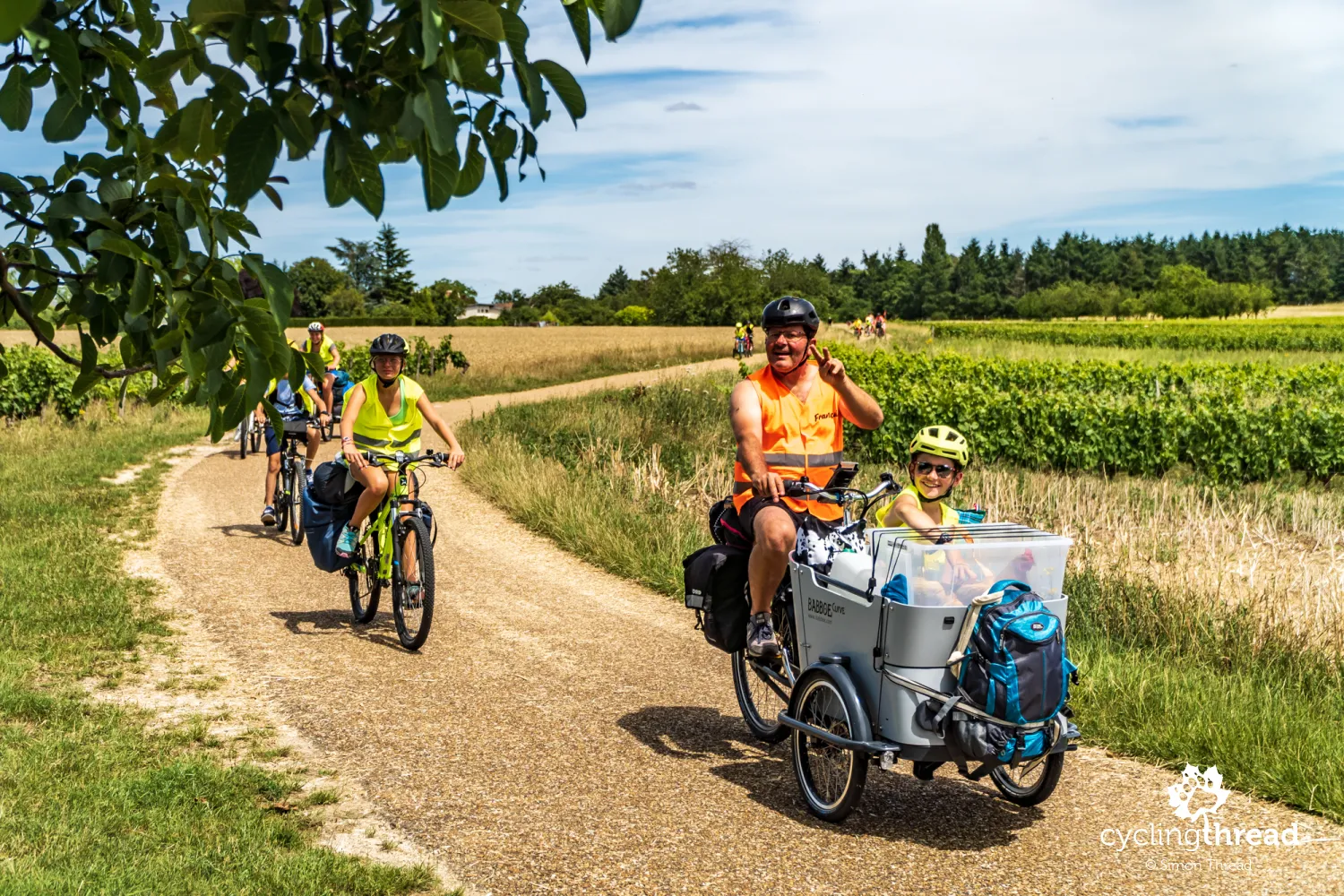
Garden festival more attractive than the castle
Riding along with the cycling family, we reached the Chaumont-sur-Loire Castle. Another of the most famous along the Loire, it is a majestic example of Renaissance architecture. The castle is surrounded by vast gardens, as impressive as the castle itself. Each year, it hosts the Garden Festival, attracting nature lovers from around the world. This internationally renowned festival is an opportunity for artists, gardeners and landscape architects to present their innovative concepts in beautifully designed gardens. The festival transforms the castle grounds into living art galleries, offering a unique experience that combines the beauty of nature with often innovative artistic perspectives.

How to prepare a room for bicycles?
That day, we reached the cozy Chaptal Hotel in Amboise for our night's stay, which quickly proved to be one of the most cycle-friendly establishments during all our cycling trips across Europe. This is thanks to the excellently organized bike room - a space that combines secure bike storage with a bike workshop, a charging area for electric bikes and even a changing room and rack for wet clothes. Additionally, the bike room is accessible directly from the street through a separate entrance and a specially built ramp. The hotel is, of course, part of the Accueil Vélo network, proudly indicated by a plaque placed right under the official state sign with the number of hotel stars.
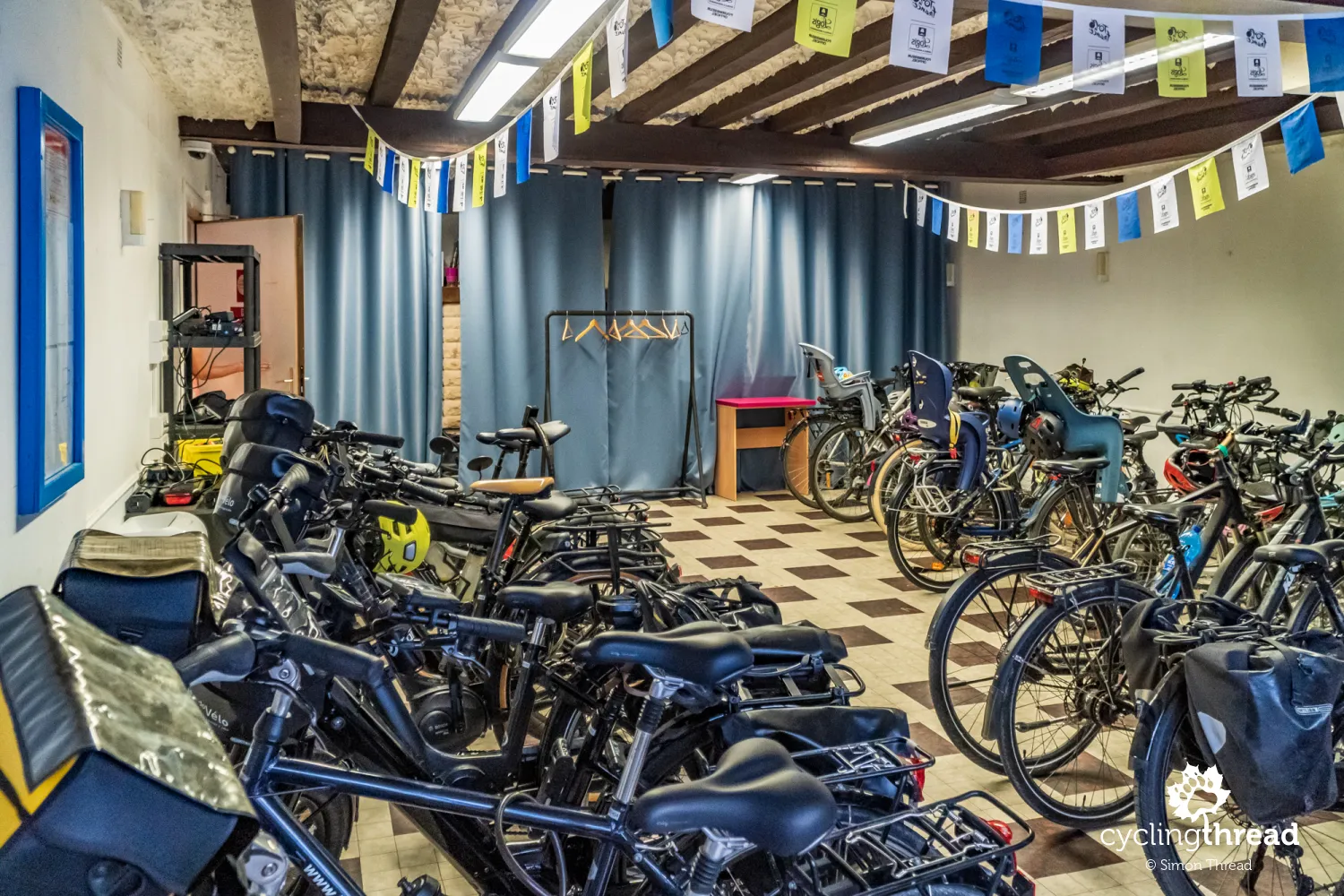
Foie gras - unethical but delicious
In Amboise, we found foie gras on the menu of a local restaurant, a pâté made from fattened duck and goose livers. Foie gras is one of the most renowned delicacies of French cuisine, yet it is also one of the most unethically produced dishes, sparking much controversy. The force-feeding process, known as gavage, involves feeding the birds large amounts of food through a tube directly into their esophagus, leading to a pathological enlargement of the liver. Critics consider this process cruel and inhumane, highlighting the stress and suffering experienced by the animals. Foie gras, therefore, symbolizes the dilemma between culinary tradition and animal rights. It's harder for me to write that the foie gras we tried as an appetizer in Amboise was delicious, tasting like our delicate liver pâté with a slightly nutty flavor.

Two beautiful châteaux and Leonardo da Vinci
However, Amboise is primarily about two more beautiful and very unique châteaux on our route, both connected to the famous Leonardo da Vinci. The first we visited, Clos Lucé Palace, is where Leonardo da Vinci spent the last years of his life. Invited by King Francis I, he lived here from 1516. The beautiful palace with Renaissance facade houses a museum dedicated to the scholar, featuring replicas of his inventions and copies of his artworks. In the palace, one can also see the room where the artist died in 1519. Even the surrounding gardens are full of models of machines designed by da Vinci, making Clos Lucé not just a monument but also a place of exploration and learning.

Meanwhile, the Château d'Amboise was once a majestic royal castle situated on a rocky promontory above the Loire, serving as a residence for the kings of France for centuries. Of the once magnificent castle complex, which originally consisted of forty buildings, only two structures survive to this day - the Gothic wing and the Louis XII wing. Many buildings have not survived to our times due to various wars, confiscations and revolutions that hit France over the centuries. Inside the preserved wing, visitors can admire numerous halls and a little further, the Chapel of Saint Hubert, where Leonardo da Vinci's body rests. Despite losing its original grandeur, Château d'Amboise still fascinates with history and architecture. We were additionally charmed by the castle's silhouette bathed in the orange light of the setting sun.

Amboise Castle is worth visiting even just for the spectacular views of the city and river and for a short walk in the well-maintained, small castle garden. Our memory of Amboise also includes a small market taking place in the castle courtyard, featuring local producers of jams, liqueurs, wines and sweets and an interview for French television, which was filming a short piece about the resurgence of tourism after the pandemic pause. Oh and the previous day's evening walk through the narrow streets of the town and along the riverside promenade at sunset. In summary, Amboise has everything to be well remembered among the distinguished towns and villages along the Loire.

One of France's most important wine regions
The area around Amboise is also where we see the most evidence of the role played by the wine industry - it's one of France's most important wine regions, alongside such famous areas as Bordeaux, Burgundy or Champagne. The region is divided into several smaller appellations like Muscadet, Anjou, Saumur, Bourgueil, Chinon and Vouvray, producing rich and diverse wines. The vineyards are mainly located on the gentle, south-facing slopes of the valley, providing optimal conditions for grapevine growth - protection from strong winds, good sunlight and proper drainage. Winegrowing in the Loire Valley includes many different grape varieties, including Chenin Blanc, Cabernet Franc and Sauvignon Blanc. Sustainable and organic farming methods are often employed and grapes are handpicked to ensure the highest quality. After harvesting, the process of fermentation, aging and bottling contributes to the unique character of the Loire Valley wines.

Tours - another highlight of our cycling trip
But the star of our next day's journey was Tours, with its atmosphere that captivated us at the Place Plumereau, the central square in Tours. The cobblestoned streets of the old town, sometimes even called “little Paris,” are surrounded by medieval houses transformed into cafes, restaurants and boutiques. Place Plumereau was bustling with students and tourists, all admiring, like us, the extraordinary wooden houses around. A few hundred meters further, the monumental Gothic architecture of Saint-Gatien's Cathedral amazes. Our guide informed us that Tours is a city associated with the cult of Saint Martin, who was the bishop of Tours. This is partly why Tours is an important stop on the EuroVelo 3 cycle route from Trondheim to Santiago de Compostela. EuroVelo 3, known as the Pilgrims' Route, shares a common course from Orleans to Tours with our Loire route.

Four garden sectors at Villandry castle
The Loire cycle route pleasantly leads us out of central Tours through parks and green recreational areas towards the next gem of the Loire region. This is the Renaissance Château de Villandry, located on the Cher River, a left tributary of the Loire and surrounded by magnificent gardens. Built relatively late in the early 16th century, the castle is called the last of the great castles of the Loire. The gardens, a perfect example of a well-recreated French garden style, are divided into four sectors - the vegetable garden, water garden, ornamental garden and sun garden. Each differs in plant composition, geometric forms and purpose. Château de Villandry is open to the public and will especially appeal to those seeking primarily aesthetic experiences.

Cycle path on the crown of the flood embankment
The next section of the Loire route - beyond Villandry, towards Chinon, where we planned to see the ruins of a majestic fortress - was a bit of a letdown. For almost 20 kilometers, the route runs along a road with a 70 km/h speed limit, probably imposed because of cyclists, though it still feels a bit too fast for comfortable cycling. We weren't in danger, but after previously more cyclist-friendly sections, we definitely felt like we were in regular traffic. Fortunately, it doesn't last long and the section is accompanied by beautiful views of the river from the road, running along the crown of the flood embankment.

The Duchy of Brittany becomes part of the Kingdom of France
In the middle of this road section, on the other side of the river, lies the small town of Langeais with - of course - another castle. Here, during a visit, we witnessed a short "light and sound" show depicting the most important event in the castle's history, namely the royal wedding ceremony of Charles VIII to the 14-year-old Anne of Brittany. During the fifteen-minute multimedia show, we were virtual witnesses to the historic moment of incorporating the previously independent Duchy of Brittany into the Kingdom of France. Langeais Castle is also famous for its collection of original 16th-century tapestries.

Good website for the Loire Route
Turning towards Chinon, we took one of the many available alternative routes while the main trail continued straight along the Loire. This is a good opportunity to mention the good, clear map available on the official website of the route. The map clearly shows which sections have dedicated infrastructure (green) and which follow other roads (red). However, a quick glance shows that even empty asphalt “service” roads on the Loire embankments between Sully and Orleans (shown below) are marked as red, meaning the overall riding comfort is a bit more "green" than indicated on the map. The website also has a decent planner that quickly plots a route between two points on the trail.

Joan of Arc arrives at the Chinon fortress
The fortress in Chinon, which we reached via a side variant of the Loire à vélo route, is situated on a steep hill overlooking the Vienne River. This is yet another of the most important and grand historical sites in the Loire Valley. It is best known as the place where Joan of Arc met the future King Charles VII in 1429, a fact emphasized in many places here. Inside the fortress, there is a museum telling the story of Chinon, as well as Joan of Arc. Interestingly, the fortified complex in Chinon consists of three separate structures surrounded by defensive walls and moats. Almost from every part of the fortress, there are views over the town of Chinon and the surrounding vineyards.

Located just a few dozen meters below, the old town of Chinon is a charming labyrinth of historic streets and houses, through which we rode towards our cycling hotel. In the heart of the town, there is a grotto carved into the rocks beneath the fortress, where wine produced in the region is aged and where tastings of the famous Loire vintages from the Chinon appellation are offered. Touring the short corridors, it's worth looking up - the Plouzeau winery is connected to the fortress buildings by a several-meter-deep well. You can even stop for a tour of the wine cellar corridors and a symbolic tasting during a cycling activity - the place is part of the cyclist-friendly network.

Fouée, foie gras, tarte tatin and rillettes
One of the Loire wines accompanied us during a delightful dinner at the Au Local restaurant in Chinon, located right next to the castle tower. The setting sun, kilometers in our legs and quiet conversations at the tables on the terrace, interrupted by sighs elicited by tantalized taste buds... Local Loire delicacies are mentioned on the official route's website. It talks about traditional almond cake with rum from Nantes, mentions fouée, which is pork balls with something like pâté, there's also nougat cake from Tours, goat cheeses from the Loire Valley, tarte tatin - an upside-down apple tart, famous mustards from Orleans and more. France is undeniably a paradise for gourmets... and that should also be included in the program of a trip to the Loire Valley, exceptionally trading kilometers for calories.

Troglodytes, the cave dwellers of the Loire Valley
An interesting chapter of our early history, whose traces are clearly visible in many places in the Loire Valley, are the troglodytes and the dozens of caves that were formed even 25-35 thousand years ago! The caves were carved into the soft limestone and other sedimentary rocks in the Loire Valley and dozens, maybe even hundreds of them, have survived to this day. Although Louresse-Rochemenier, located a bit further, is mentioned as the best-preserved troglodytic town in the Loire Valley, along the Loire trail, one can also encounter many examples of this very early human settlement, including near Saumur, which we headed to on the penultimate day of our trip.

The troglodytic caves were used over the centuries as living spaces, had defensive functions and also served as storage places for food and goods. Today, some of these sites house cafes or wineries, shops, or local artisan workshops. Many of them now have a built first “facade,” turning most of them into a kind of closed residential or service premises. Interestingly, French law is being developed to regulate issues of occupying or remodeling former troglodytic caves. Meanwhile, even a bike ride through Turquant and its surroundings, through narrow, rocky passages, is attractive.

Broad panorama from the Saumur castle
Soon after our encounter with the troglodytes, we arrived in Saumur, where we were once again convinced that the beautiful palaces and castles of the Loire Valley never cease to amaze us. This time, the task fell to the Saumur Castle, situated perhaps at the highest point of all the castles we had seen, thus offering the most expansive panorama from its windows and terraces. The first traces of the fortress in Saumur date back to the 10th century, making the castle an example of very early Gothic architecture. Inside the castle is the Horse Museum, which presents the history of horsemanship. Saumur Castle is not only a majestic monument but also an important cultural site, offering a variety of attractions for visitors. It's a place where history meets nature, adding more pleasant memories to the tourists' minds.

Cycling tour operators in the Loire
On the last day of our trip, we met the Poles on bicycles - a group from Warsaw, clients of a cycling tour operator. They were traveling in the opposite direction to us, just starting their journey - we envied them for all the beautiful places still ahead of them. While writing this article, I checked the website of Bird Service, our friendly cycling holiday agency and saw that the company offers trips to the Loire in two variants - a lighter, perhaps more culinary-focused one and an "intensive" hiking one, covering the stretch from Orleans to Saumur. And they even include the beautiful Chenonceau, which we had skipped. I admire the planned short distances - about 50 kilometers, which is just right to allow for sightseeing and enjoying the region's culture.

Seventeen towers of the Angers fortress as a grand finale
The Castle of Angers, also known as Château d'Angers, is an impressive medieval fortress located in the heart of Angers. It is surrounded by massive stone walls with 17 towers, creating a formidable image within the urban fabric. Inside the castle is a courtyard with green gardens. However, the real gem of the castle is the Chapel of Saint John and the most famous treasure - the "Apocalypse Tapestry" of Angers, the largest preserved medieval tapestry in the world. Unfortunately, due to the late hour and our early morning departure, we couldn't witness its beauty firsthand.

Cycling information point in Angers
During our evening walk in Angers, we noticed a tourist information point near the incredible fortress - another facility in the French network of cyclist-friendly places, Accueil Vélo. It's called La Conciergerie Vélo, a cycling "porter's lodge," reminiscent of the Radbutler - the "cycling valet" from Carinthia on the Alpe-Adria and Drava cycling routes. The purpose of both is to safely store bicycles while the cyclist explores or stays overnight in the city. This way, the city not only helps tourists but also relieves accommodation facilities from the obligation of providing secure bike storage. Similar boxes for cycling tourists are also available in Frankfurt (Oder) on the Oder-Neisse cycle route.
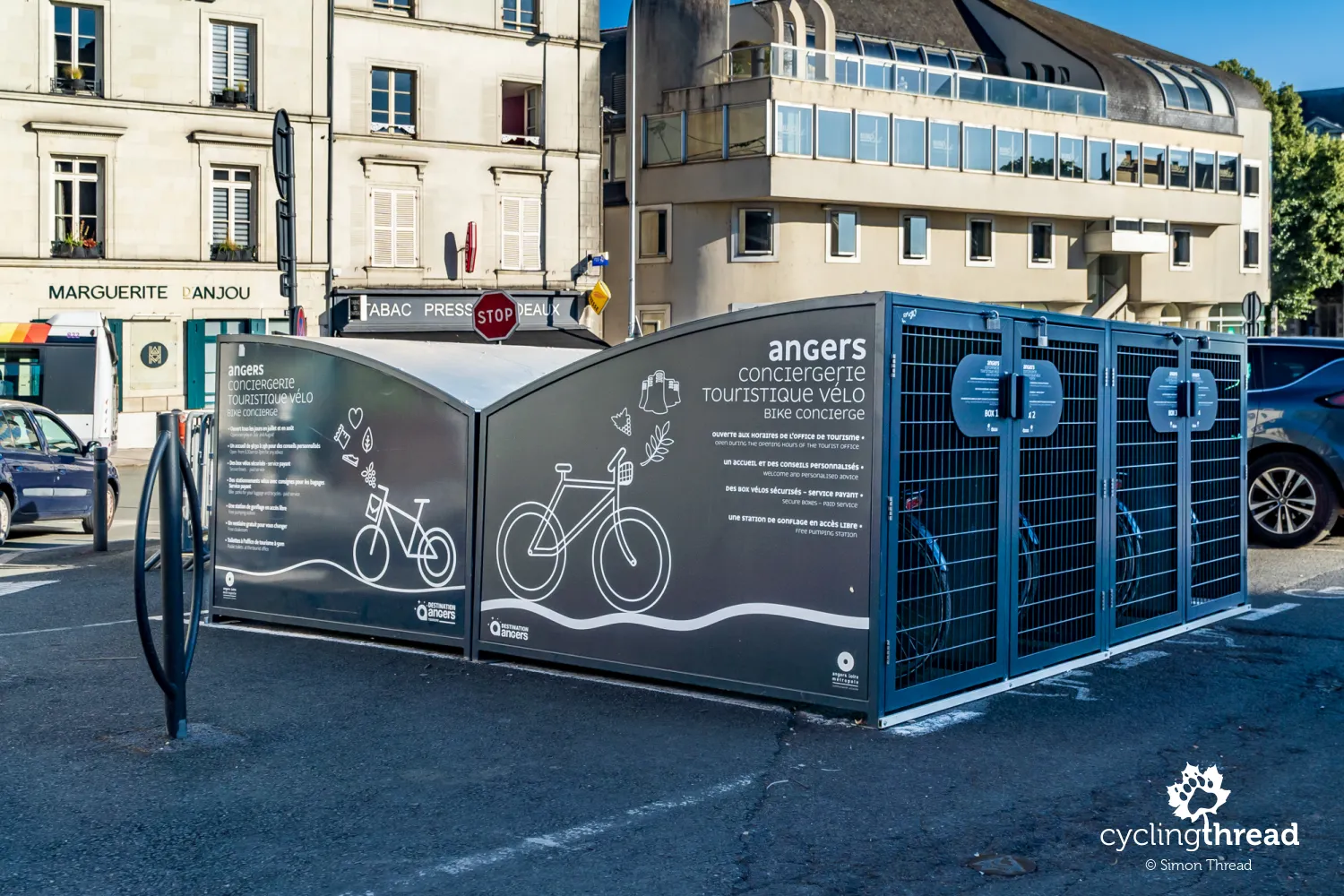
Special train for cyclists in the Loire
Perhaps the most exceptional moment of being cyclist-friendly happened at the end of our French trip when we went to the railway station to return by train to our car left in Orleans. A young girl in the French railway SNCF uniform came out of a randomly chosen train, asked us to remove our bicycles and panniers and then personally led our bicycles to the bicycle compartment on the lower level of a regional double-decker. She asked about our destination and arranged the bicycles in the special racks in the right order. We then took our seats on the upper deck, designated for the bicycle owners and later collected them in Orleans. Only upon disembarking did I see the La Loire à Vélo inscription on the train, so I later read up on the rest of the information.
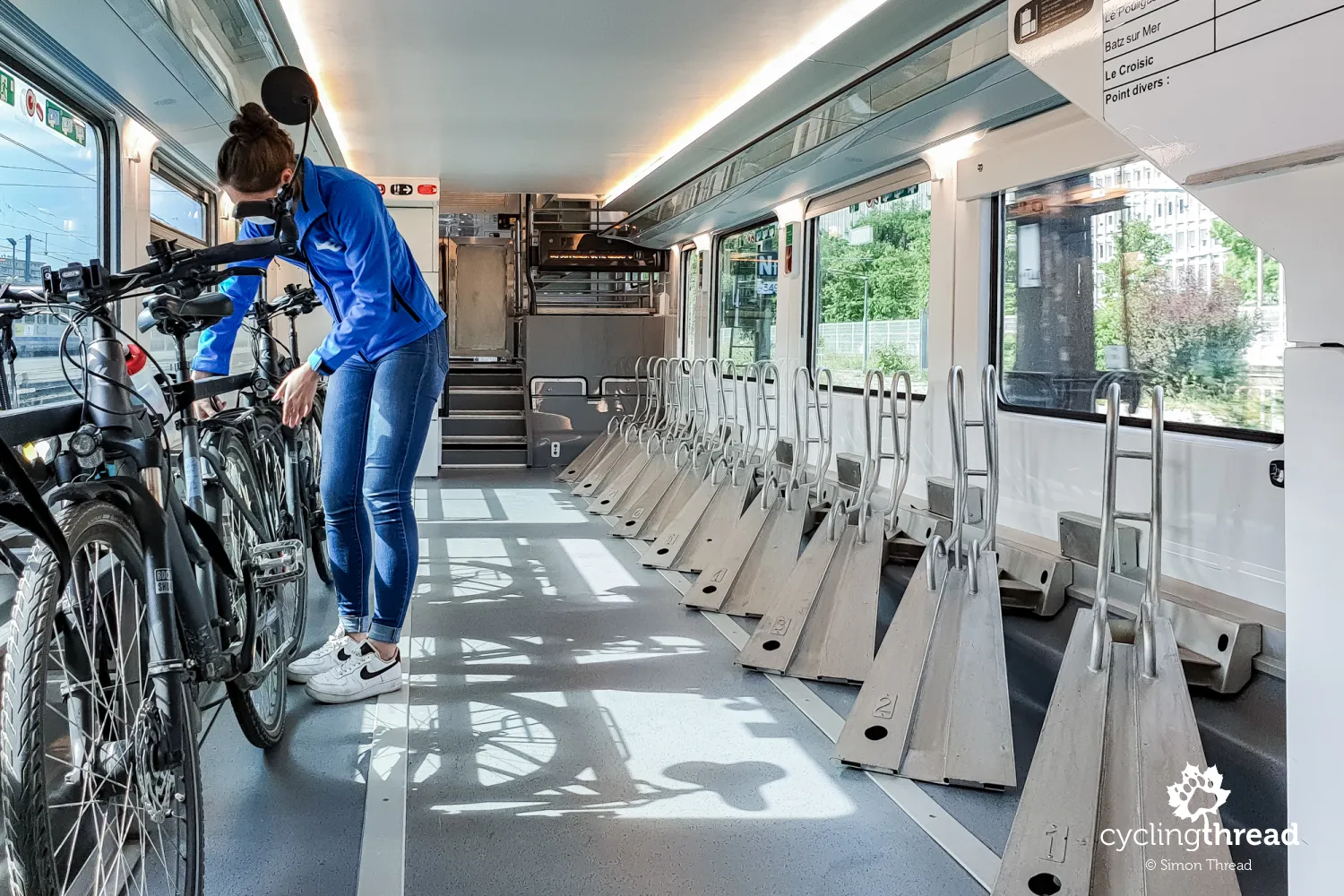
It turns out that the Train Vélo Loire operates from mid-June to mid-September along the railway line following the Loire - from Orleans through Blois, Saint Pierre-des-Corps (near Tours), Saumur, Angers and Nantes, all the way to Le Croisic, a small town on the Bay of Biscay near Saint-Nazaire. The transportation of bicycles is free of charge, as in all other TER regional trains in France and no reservation is needed. But the best part: the minimum number of bicycles these trains can carry is 33 and during the peak season, one train set can accommodate up to 83 bicycles! During our cycling trips, we never encountered a train that could take a larger number of bicycles on one trip.

To the Loire on a well-organized route
So, if you want to feel that being a cycling tourist matters to someone, even if it's just a company-client relationship and if you want to be assured that the money saved for your cycling holiday will give you a full-value product, then choose regions like the Loire Valley in France for your cycling vacations. Here, a team of people works on your satisfaction. Wishing you a beautiful summer and safe travels :-)
Back to top


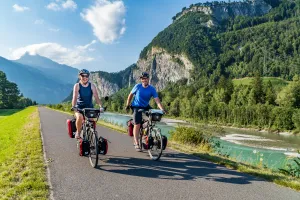
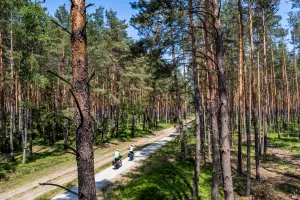
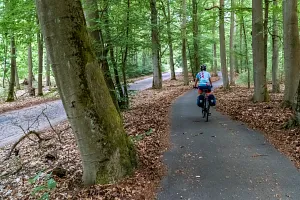
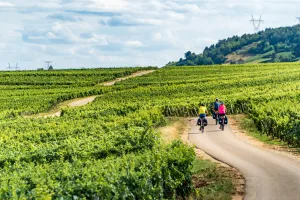
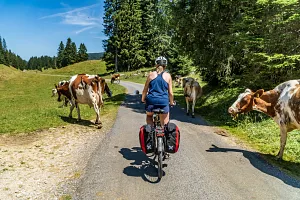
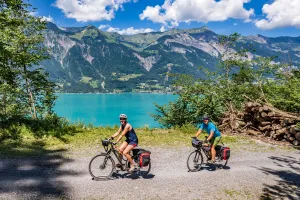
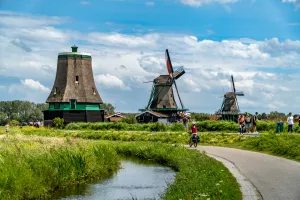
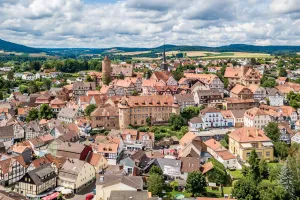
Your Comments
Add new comment